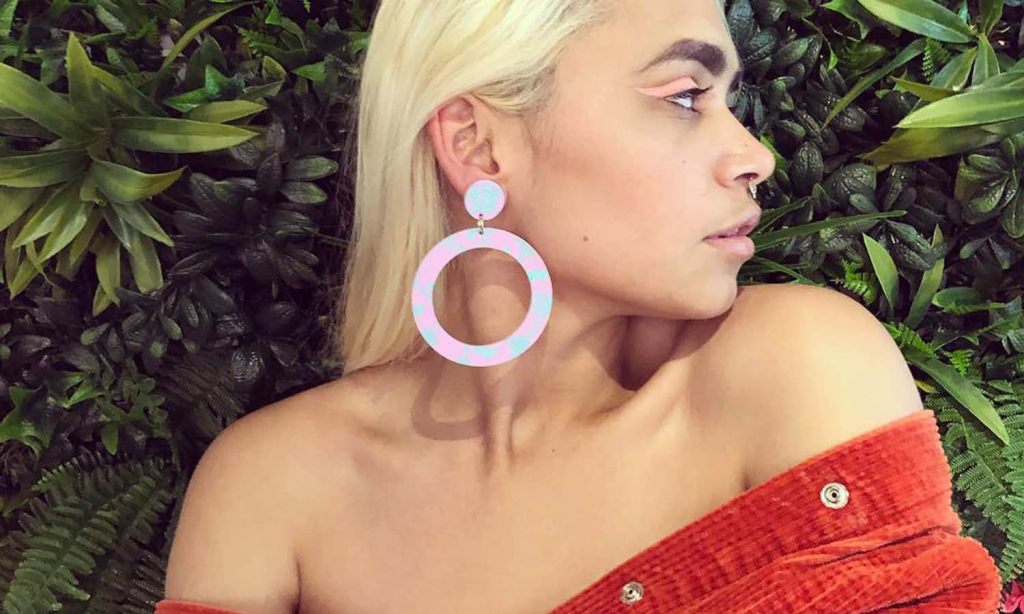In recognition of First Nations designers and business owners who are working to showcase their Indigenous pride and heritage in their designs, we’ve compiled an evolving list of Aboriginal Australian women doing just that.
Show your support for Australia’s thriving Indigenous fashion community now by browsing and shopping the labels outlined below, and if we’ve missed one you think we need to know about, then please kindly let us know by sliding into our DMs on Instagram or emailing us at editorial@thelatch.vmd-multisite.dev-serv.net.
Clothing the Gap
Aboriginal-owned business Clothing the Gap is designing and creating conversation-starting garments that unite. All profits made in product purchases support grassroots Aboriginal health and education programs.
In a blog post on the Clothing the Gap site, the founders invite all who feel comfortable to wear their pieces. “We make our pieces for everybody to wear and celebrate! Our clothing works to unite people through fashion and cause. We invite you to wear anything you are comfortable with wearing.
“Purchasing and wearing merchandise such as jewellery, clothing and tote bags from Aboriginal businesses is one really practical way allies can support the Indigenous Community.”
https://www.instagram.com/p/B9qBLU-H4HV/
Haus of Dizzy
Wiradjuri woman Kristy Dickinson is the founder of jewellery brand Haus of Dizzy and the self-professed “Queen of Bling”. Using her solar-powered laser cutter, she crafts one-of-a-kind statement earrings and accessories inspired by her Indigenous heritage and love of ’90s hip hop.
With her designs, Dickinson likes to “shine light on political, Indigenous, environmental and feminist issues,” she said in an interview with SBS. And her work has caught the eye of many famous faces around the world. Actors Miranda Tapsell and Drew Barrymore are dedicated fans, in addition to RnB icon Lauryn Hill.
https://www.instagram.com/p/B9JJ7baj-s0/
Gammin Threads
Tahnee Edwards is the founder of Gammin Threads, and is a proud descendant of the Yorta Yorta, Taungurung, Boonwurrung and Mutti Mutti nations. While she works full time at an Aboriginal family violence prevention service, her love of typography, language and Blak pride is what sparked Gammin Threads as her side hustle.
Her range consists of “deadly chillwear and accessories for people who believe in living colourfully, paying respect and empowering women”, the Gammin Threads site reads.
As to whether white allies are welcome to wear her designs? Edwards has a page on her site dedicated to answering just this, which you can read here.
https://www.instagram.com/p/B5wDwVgg__P/
Ngarru Miimi
Lillardia Briggs-Houston is a Gangalu, Yorta Yorta, Wiradjuri artisans founder of Ngarru Miimi, which translates to ‘Honey Sister’. All of her pieces are hand-printed and ethically crafted.
In an about page on her site, Briggs-Houston shares that “Ngarru Miimi was created as a reflection of the strength in identity, pride in culture and resilience of Aboriginal Peoples, with the power of kinship and connection to ancestral lands being the backbone of Aboriginal communities. Ngarru Miimi embodies these values and tells the story of traditional practices handed down from generation to generation.”
It is founder Briggs-Houston’s dream to inspire those who wear her designs to feel “the same sense of strength, pride and connection that we feel as Aboriginal people and to collectively showcase Aboriginal culture as a daily reminder that we are, and always will, stand strong on traditional lands”.
https://www.instagram.com/p/CAmstixApIv/
Liandra
Liandra Swim is designed in Australia and ethically made in Bali. Founder and designer Liandra Gaykamangu, is a Yolngu woman from north-nast Arnhem Land, in the Northern Territory.
“Our signature prints are inspired by our Aboriginal Australian culture. Our dream is to give you the opportunity to exhibit a slice of culture, that has been tens-of-thousands of years in the making,” the label says on it’s site. “Each print tells a unique story, where we combine 21st-century fashion with the Aboriginal pastime of storytelling.”
The label names each design after a ground-breaking Indigenous woman. In doing so, their hope “is to enlighten and share the narrative, of the individual, with our customers who in turn shares their learned experience with family and friends”.
https://www.instagram.com/p/B_PLB3RjVaC/







